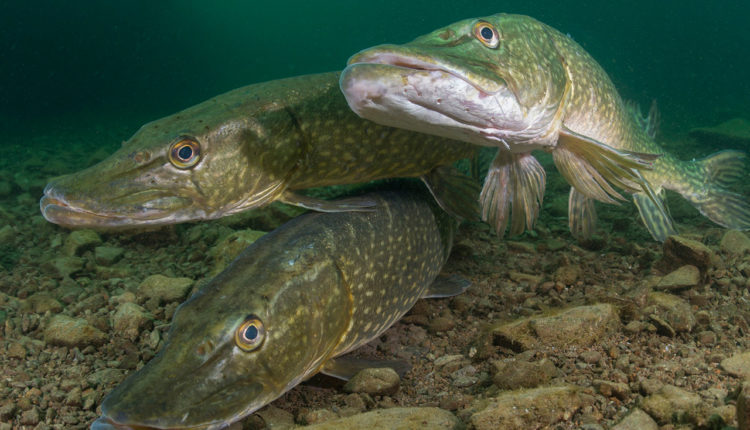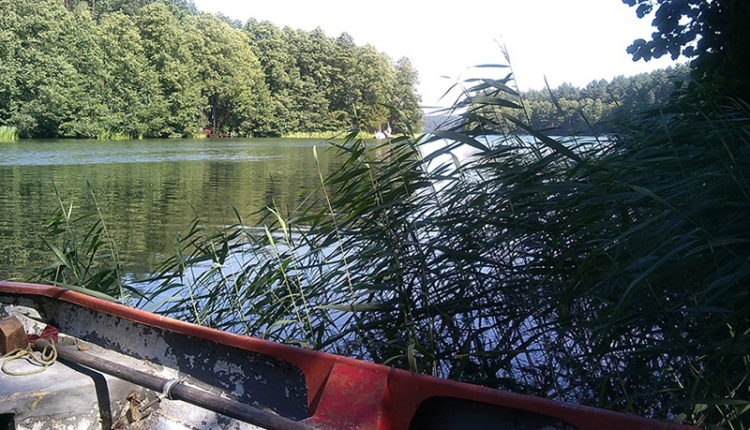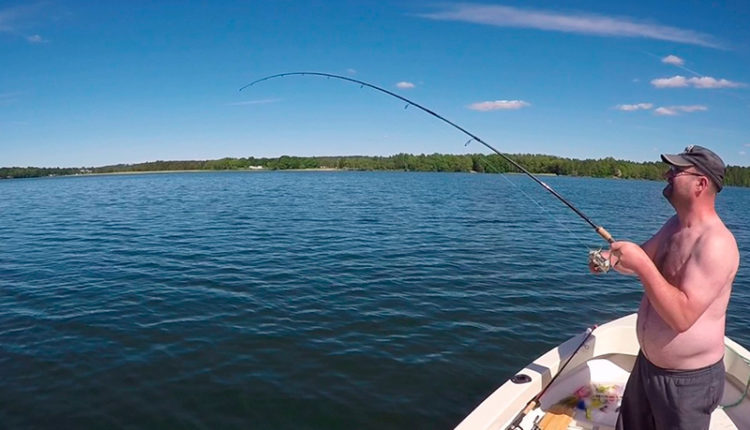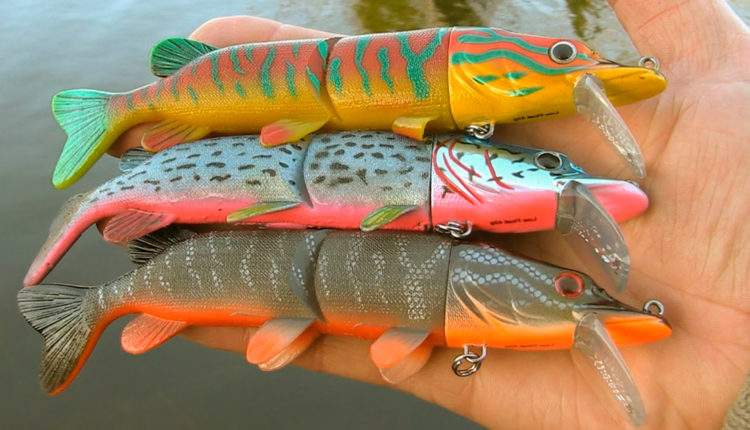Contents
Pike for me has always been among the special priorities on the pond. But unlike some other species, when catching pike, you are rarely satisfied with the very fact of catching, trying to catch a real trophy. Quite a lot has been said about her catching, but quite harsh stereotypes are often found in discussions on this topic.
I like to catch pike and other predatory fish in large water bodies, in conditions of considerable depth or vast water areas. Where there are no visible landmarks that can tell you where to look for fish. Such conditions seem to me the most interesting, and a kind of duel with fish is more honest. But this is my personal opinion.
In most cases, I use fairly large baits and I am convinced that this is the tactic that brings me results. But there are exceptions. I propose to analyze a few typical beliefs in order to understand whether they are so peremptory. After all, I myself, like any person, is also influenced by stereotypes.
I am aware of at least three cases of catching pike weighing more than 9 kg at a depth of 7–10 meters with an actual depth of about 50 m.
The most common statement about the pike is that it is a predator that leads a sedentary lifestyle and prefers to hunt from cover. And, therefore, you can meet a toothy one where there are such shelters. The first thing that comes to mind is aquatic vegetation and snags. These places were the first in the list of places I visited. Although, they are not everywhere. And you can add: not everywhere where there are shelters, there are pike, just as not everywhere where there is a pike, there are shelters.

In truth, this predator, like any other, adapts well to conditions.
But if, for example, the chub is still rarely seen outside of its traditional places, then the pike is much more mobile. The main goal of the toothy is, of course, the food supply. Practice shows that pike can hunt in the water column at an actual depth of 10, 20 or more meters. I know of at least three cases of catching pike weighing more than 9 kg at a depth of 7–10 meters with an actual depth of about 50. Obviously, there are no natural or artificial shelters in such a place.
Many stereotypes are confirmed in practice, but in most cases there will always be an alternative path to success.
It is likely that the pike uses its color as a camouflage much more than the environment. Otherwise, how can one explain such differences in the color of the toothy? Including overall color. Actually, the tactics of vertical jig is largely based on this: the search for places of accumulation of small fish and the parking of a large predator next to them.
Therefore, here is my main advice: in no case do not get hung up on certain places. Remember that during the year processes occur in the aquatic environment that radically change the living conditions of fish. Absolutely all fish are in constant motion. Most often, the capture of a trophy depends on the right fishing spot. In any case, this applies to a greater extent to the pike, which, unlike other species, is still less attentive to the bait.
Pike is a solitary predator
This supposedly axiom is also often tried to pass off as the truth. We will not discuss the spawning period, when, for objective reasons, pikes are forced to get along in a limited space. But many believe that in normal times a large pike does not tolerate neighborhood, occupying the entire promising area. At the same time, it is argued that after being caught, another pike quickly takes its place. This theory is difficult to prove, but not so easy to disprove, given the intensity of bites in most cases.

I myself adhered to this theory. Without putting, of course, a rigid framework, but in general, believing that the pike really does not tolerate the neighborhood. The first significant push on my established beliefs was caused during one of the fishing trips in Finland. Then we visited a small river with an average current, and the guide managed to catch 7 weighty pikes from 6 to 8,5 kg from one place. And how is this possible? The reason, according to the guide, was the accumulation of white fish in a limited area. Easy prey attracts pike, and in such a situation, when there is enough food for everyone, it is quite loyal to rivals.
Subsequently, there were enough examples confirming the possibility of finding several large pikes in one place. But what was not there was the capture of pikes in one place, which differed significantly in size. Perhaps her penchant for cannibalism still leaves its mark.
In places where there are no large concentrations of small fish, pike are usually dispersed, and it is rarely possible to catch several individuals in one place. But where small fish gather in large and dense flocks, the probability of catching several pikes at one point is quite high. For this reason, do not rush after the capture to change the place with the words: “There is nothing else here anyway.” Large fish are especially careful and choose places for a reason.
Pike habitats – water lilies and calm lakes
In a way, I have already touched on this topic in a conversation about depths, typical and not typical for pike. But if you delve into this topic, you can remember another stereotype. He says that the pike lives exclusively in places with calm water. And such places usually correspond to shallow areas of lakes, where, as a rule, there is a lot of aquatic vegetation, including water lilies.

Of course, many pike are also caught in rivers where there is a current, but even in these places they try to choose places where the current is minimal, and even better, completely absent. But do pike always keep quiet places? Once, during a trout fishing in a rapid section of the river, a toothy one weighing about 2 kg grabbed the bait right in the stream. Directly on the doorstep… As I have already said, for any predator, the food base will come first, and not imaginary comfortable conditions. In my practice of fishing both on lakes and on rivers, there were more than once cases when in outwardly typical places, I would call them stereotypical, there were no sensible results, and the predator found herself where I did not expect to see her.
Myths about large fairway pike
Anglers generally tend to come up with different stories, especially if they can justify their failures. In my opinion, one of the typical examples is stories about fairway pikes. This is the name of a large fish that lives in the depths. On the one hand, this classification confirms the assertion that the pike is not only a coastal predator. But how to find it in the open, in conditions of great depths? For most, it remains an unattainable myth.

Not all pike living at depth are large, just as not all large pike live at depth. The distribution of toothed at depth or in shallow water is determined by reasons that have nothing to do with its size. Why are larger fish more often caught at depth? I think the answer lies in relation to the anglers themselves. Pike are more vulnerable in shallow water. Fish weighing more than 3 kg are rarely released. She simply does not have time to reach trophy size. At depth, the toothy one is better protected from poaching nets, and the anglers themselves pay much less attention to it. Therefore, a pike that prefers to live away from the coast is more likely to grow. Actually this is just a guess. But the fact is that in the shallow coastal waters you can catch a large pike. I know of at least three cases when a pike weighing more than 10 kg took cover in the thick of reeds and attacked from this shelter.
More bait – bigger fish
Based on this statement, a whole direction of fishing style, called jerk, probably arose. And if earlier this meant only the type of bait, today it is more of a direction, which is characterized by significant weight and size of baits. Type comes second. Because jerks can use both hard lures and soft rubbers at the same time. And quite a few companies have released a line of lures that meet the requirements of anglers. I myself am one of the adherents of this style. I got infected with such fishing in Sweden, where catching pike with large baits is a real cult.

What is true is the tales of the greed of the pike. Perhaps the brightest representative of predators, capable of attacking slightly smaller prey. And this is true for pike of absolutely all sizes. Moreover, it seems to me that it is the medium-sized pike that shows these qualities very clearly – because it needs to quickly gain weight. Larger pike are more picky in the choice of prey. This is what I can explain the frequent capture of pikes of far from trophy size on large baits. So, if you use a 20+ wobbler, jerk or soft bait in the same size, hoping to cut off small fish, you will most likely be disappointed. She will not provide such a filter. But there are situations when large baits work worse or even lose to baits up to 12 cm long.
Theory: big bait for big pike is not always confirmed. A lace can also become a catch, but a large pike is not averse to grabbing a small bait.
I return to the theory of large bait for big pike. Adherents of this style argue that the pike is more likely to grab a large bait: why, they say, should she waste energy searching for prey and hunting for small fish? In general, everything is logical. But one day I visited a small river in the company of my friend – a fan of UL and, in particular, fishing with small jig lures. I then caught only one pike about 2 kg per jerk, and he managed to fish out several fish weighing 6–9 kg. And is it worth saying that the fight against such fish with light tackle cannot be compared with jerky fighting? True, there were enough exits, or rather cliffs, but the fact is that large pike more readily attacked baits no more than 8 cm long. Why?
On the one hand, this circumstance also confirms that the pike is not so unambiguous. Any attempts to drive it into the framework of stereotypes are doomed to failure. On the other hand, it is always possible to explain behavior if it is of a general nature. So, if it was one catch, it is quite possible that at that moment the pike would have grabbed any bait offered to it. But when one type or size doesn’t work and another does, it indicates the effectiveness of the other.
The only explanation for this situation is that the pike gets used to the food base, rigidly filtering the size. And just in such a situation, perhaps, the opposite effect works. Why chase after something incomprehensible and big, when even small, but understandable prey itself goes into the mouth! And although that fishing did not fundamentally change my attitude to large baits, now I am more attentive to the food supply.
Stamps and stereotypes are not the best allies in fishing. Any attempt to find a panacea is doomed to failure. Universal tips for choosing the type, shape, size or color of bait may also not work in a particular situation. That is why fishing is wonderful, which makes it possible to go your own way and only your own way. The mood of the fish is constantly changing. The conditions in which the predator finds himself also change. You should always analyze the situation. There is an explanation for any behavior, but not always the answer to the question lies on the surface …










